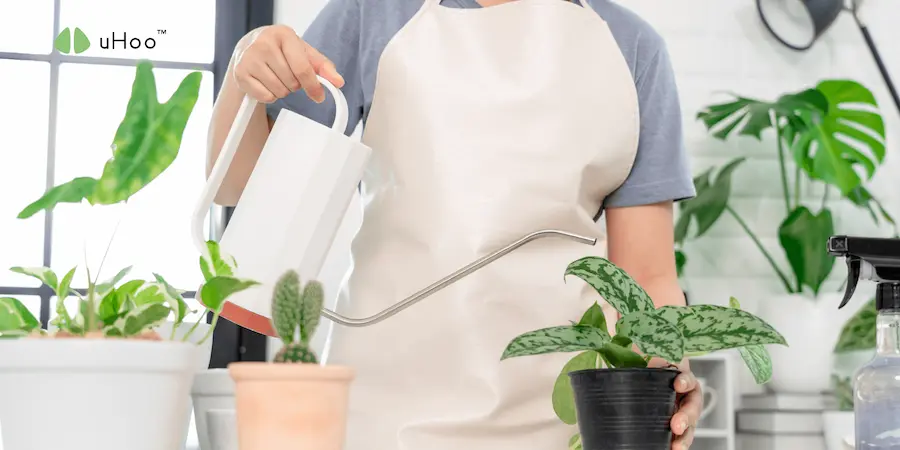As the world becomes more sensitive and ever more aware of air quality, clean environments, healthy public areas-in particular, and pet-friendly restaurants require much attention. Natural, aesthetic, and quality-enhancing solutions aiming to improve the aesthetic indoor plants and interior of these locations make them appeal more to customers and their pets.
Air Quality Benefits of Indoor Plants
Natural Air Purification
Indoor plants are quite effective natural filters that enhance air quality. Carbon dioxide is absorbed, and oxygen is released through photosynthesis to help create a healthier environment. Many indoor plants also have air purification properties that can help remove toxins from the air. Snake plants, peace lilies, and spider plants filter out many common indoor pollutants; thus, they are perfect for public areas.
Savings on Indoor Pollutants
In public spaces, the indoor air may contain several pollutants that include volatile organic compounds (VOCs) given off by cleaning agents, cooking, and furniture. Indoor plants can be used to mitigate this harmful substance in a space. According to research, some plants are capable of evaporating VOCs, leading to a great amelioration in air quality. This will be particularly important in pet-friendly venues because both human beings and animals may be adversely affected by poor air conditions.
Selecting Suitable Indoor Plants for Pet-Friendly Places
Safety Precautions Before Getting a Plant
When you are choosing indoor plants for pet-friendly locations, there is usually a great concern for the safety of your pets. Many species of houseplants have been known to be toxic to animals and could prove very dangerous to your pets. Before getting a new indoor plant, you should check up on its toxicity levels for cats and dogs as well as any other pets you may have at home. Always choose non-toxic ones.
Pet-Friendly Indoor Plant Options
Most people seek plants that can purify the air in their homes but don’t have to worry about accidentally poisoning the pets in them. Here are some of the popular pet-friendly plants, such as these, which enhance your air quality without putting your furry pals in harm’s way:
- Boston Fern (Nephrolepis exaltata). While it loves to thrive in air crammed full of moisture, this lush green plant excels at eliminating formaldehyde and other toxins from the air.
- Bamboo Palm (Chamaedorea seifrizii): Purifies benzene, formaldehyde, and trichloroethylene, and gives you a little jungle vibe.
- Spider Plant (Chlorophytum comosum): Spider plants are reliable, low-maintenance, and easy on indoor pollution; it’s also pet-friendly.
- Areca Palm (Dypsis lutescens): Adding moisture to indoor air, Areca palm is pet-safe too.
- Calathea spp. Calathea These beautiful leaves have made calatheas non-toxic to pets and help purify the air.
- Gerbera Daisies(Gerbera jamesonii): These lovely flowers add a splash of color to any room but also don’t pose a risk to pets.
- Orchids (Orchidaceae): Exotic, yet safe to animals, orchids can be added to your interior and exterior design.
- Various Succulents: Succulents, such as Echeveria and Haworthia, are nontoxic to pets and low-maintenance, so they work well in busy environments.
By choosing these pet-friendly flowers and plants, you can welcome pets to your institution while achieving healthy safety by giving everyone a warm welcome.
Pet-Friendly Plants for Decoration
Besides being pet-friendly, choose low-maintenance plants. Some of the types need less frequent watering and can thrive in different indoor conditions, hence making them quite ideal to have in your institution without using much staff time.
Integrating Air Quality Monitors
Why Monitoring Air Quality is Important
Monitoring and incorporating air quality monitors into various settings can be very important for achieving optimal air quality. These devices provide immediate insight into indoor air conditions, and therefore, creating an environment can make decisions based on established information about air quality management.
Recommended Air Quality Monitors
The best public space air quality monitor is the uHoo Aura. It measures numerous air quality factors, including humidity, temperature, and pollutant levels, thus helping restaurant owners maintain a healthy atmosphere for customers. Monitoring with these devices can easily identify the possible air quality problems of any establishment.
Best Practices for Healthy Indoor Air
Monitor Houseplants
Regulate houseplants. Since houseplants are thought to improve air quality in rooms, controlling how many you have may be quite necessary. However, do keep in mind that with too many indoor plants around, there is always a risk of their toxins accumulating inside those rooms.
Indoor plants require constant care for them to be effective in improving indoor air quality. The best care would include regular water provision, pruning, and changing dead plants. Such green friends should receive proper training from staff on their maintenance to help keep the internal environment lively and healthy.
Other Tips to Improve Indoor Air Quality
Besides that, apart from indoor plantings, many other best practices promote maximum air quality improvement. These include ventilation, the use of natural cleaning agents, and maintaining a schedule for keeping spaces clean all of which contribute strongly to an all-round improvement in air quality.
Conclusion
The introduction of indoor plants is important to bringing pet-friendliness to public spaces, making them more comfortable for patrons and their pets. With such plants, proper air quality monitoring, and healthy environment upkeep, restaurant owners can then promote welcoming spaces that focus on health and wellness. The combination of plants and, in this case, the uHoo Aura air quality monitor represents the better step forward for fostering a healthier environment from which everybody depending on two or four legged goes out thriving.


